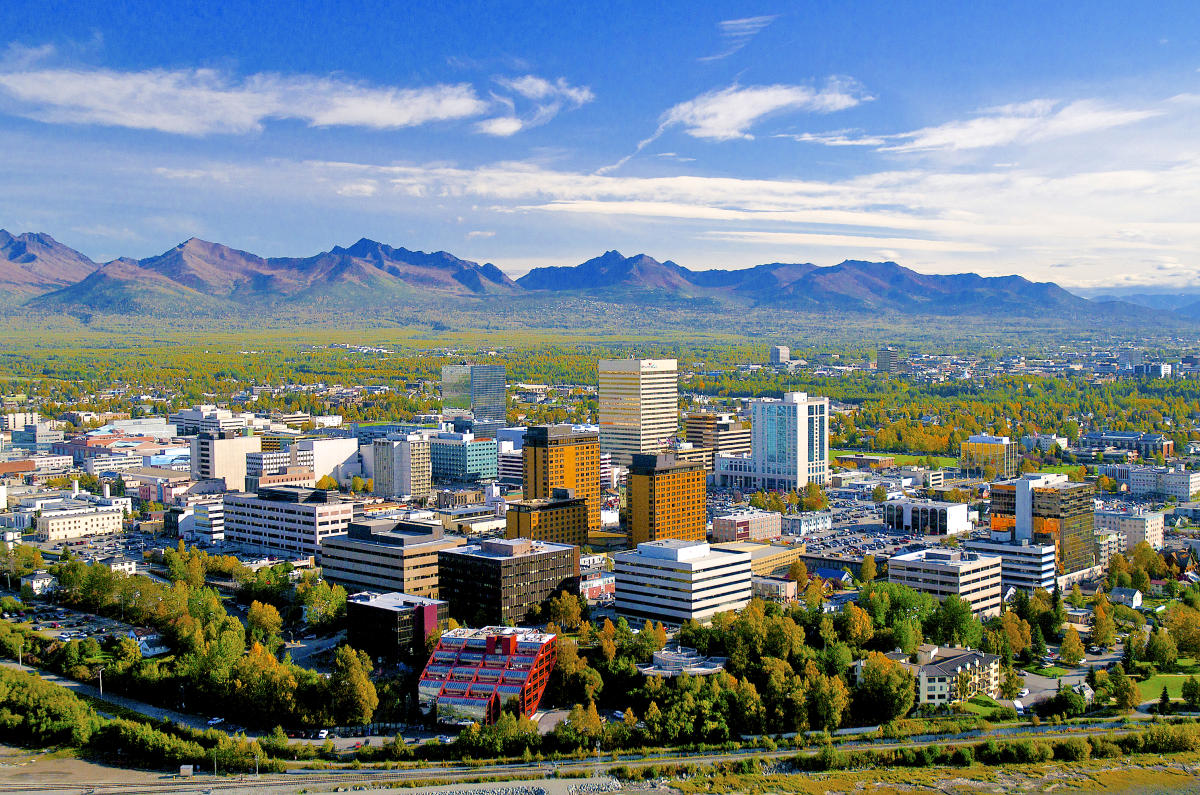
Anchorage Weather
See long range weather forecasts for the next 60 days for the Alaska Region. The Old Farmer's Almanac's scientifically-based, long range forecasts can be used to make more informed decisions about future plans that depend on the weather, from vacations and weddings to sporting events and outdoor activities.
First winter snowfall on the in September 2005has a with the code Dsc according to the due to its short, cool summers. Average daytime summer temperatures range from approximately 55 to 78 °F (12.8 to 25.6 °C); average daytime winter temperatures are about 5 to 30 °F (−15.0 to −1.1 °C). Getamped mobile. Anchorage has a frost-free growing season that averages slightly over one hundred days.Average January low and high temperatures at (PANC) are 11 / 23 °F (−11.7 / −5.0 °C) with an average winter snowfall of 75.5 inches or 1.92 metres. Further afield at the is another weather station recording colder night temperatures in both summer and winter.The weather on any given day and indeed for entire seasons can be very unpredictable. Some winters feature several feet of snow and cold temperatures, while others like that of 1976–77 (in the January of which Anchorage amazingly averaged 2.7 °F or 1.5 °C warmer than almost 30 degrees closer to the equator), just a foot or two of snow and frequent thaws, which put dangerous ice on the streets.On March 17, 2002, there was a storm causing 22 inches of snow closing schools for the next two days.
The storm broke the city record for the most snowfall in a single day. The storm, which started the evening of March 16, easily surpassed the old record of 15.6 inches or 0.40 metres recorded on 28 December and 29 December 1955. On March 17, 22 inches or 0.56 metres were measured by the National Weather Service, topping the old record of 15.6 inches or 0.40 metres set on December 29, 1955.Climate chart.
−11Average max. Temperatures in °CPrecipitation totals in mmThe 2011-2012 winter had 134.5 inches or 3.42 metres, which made it the snowiest winter on record while the least snowiest winter of record was 2014-2015 when 25.1 inches or 0.64 metres of snow fell. The coldest ever recorded at the original weather station located at was −38 °F or −38.9 °C on February 3, 1947.Due to its proximity to active, ash hazards are a significant, though infrequent, occurrence. The most recent notable incident was an August, 1992 eruption of Mt. Spurr, which is located 78 miles west of the city.

The eruption deposited about 3 mm of volcanic ash on the city. The clean-up of ash resulted in excessive demands for water and caused major problems for the Anchorage Water and Wastewater Utility.Summers are typically mild (although cool compared to the and even ), though it can rain frequently. Average July low and high temperatures are 52 / 66 °F (11.1 / 18.9 °C) and the hottest reading ever recorded was 90 °F or 32.2 °C on July 4, 2019. The average annual precipitation at the airport is 16.63 inches or 422.4 millimetres.Because of Anchorage’s, summer days are very long and winter daylight hours are very short. Anchorage is often cloudy during the winter, which decreases the amount of sunlight experienced by residents. Climate data for Campbell Airstrip (Anchorage Alaska)MonthJanFebMarAprMayJunJulAugSepOctNovDecYearAverage high °F (°C)20(−7)26(−3)35(2)45(7)58(14)66(19)68(20)65(18)55(13)41(5)26(−3)22(−6)44(7)Average low °F (°C)2(−17)4(−16)9(−13)22(−6)33(1)41(5)47(8)44(7)35(2)22(−6)7(−14)5(−15)23(−5)Average snowfall inches (cm)10(25)16(41)18(46)9(23)0.2(0.51)0(0)0(0)0(0)0(0)9(23)11(28)2(5.1)75.2(191.61)Source: NOAANotes.
